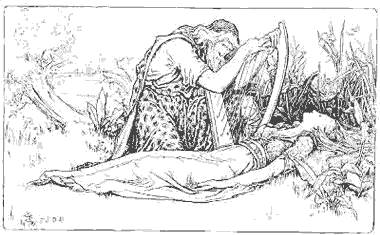

Songs That Made History: The English and Scottish Popular Ballads collected by Francis J. Childs in the 19th century still prove popular. Recent recordings include Iona Fyfe and Steeleye Span (The Twa Sisters), The Outside Track (The Wife of Usher's Well), and Helen Flaherty (The Outlandish Knight).
"The Two Sisters" is a Northumbrian murder ballad that recounts the tale of a girl drowned by her sister. It is first known to have appeared on a broadside in 1656 as "The Miller and the King's Daughter." At least 21 English variants exist under several names, including "Minnorie" or "Binnorie", "The Cruel Sister", "The Wind and Rain", "Dreadful Wind and Rain", "Two Sisters", "The Bonny Swans" and the "Bonnie Bows of London". The ballad was collected by Francis J. Child (Child 10) and is also listed in the Roud Folk Song Index.

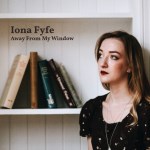
Two sisters go down by a body of water, sometimes a river and sometimes the sea. The older one pushes the younger in and refuses to pull her out again; generally the lyrics explicitly state her intent to drown her younger sister. Her motive, when included in the lyrics, is sexual jealousy – in some variants, the sisters are being two-timed by a suitor; in others, the elder sister's affections are not encouraged by the young man. In a few versions, a third sister is mentioned, but plays no significant role in events. In most versions, the older sister is described as dark, while the younger sister is fair.
When the murdered girl's body floats ashore, someone makes a musical instrument out of it, generally a harp or a fiddle, with a frame of bone and the girl's "long yellow hair" (or "golden hair") for strings. The instrument then plays itself and sings about the murder. In some versions, this occurs after the musician has taken it to the family's household, so that the elder sister is publicly revealed (sometimes at her wedding to the murdered girl's suitor) as the murderess.
It should be noted that the variant titled The Two Sisters typically omits the haunted instrument entirely, ending instead with an unrelated person (often a miller) executed for robbing the murdered girl's corpse and the elder sister sometimes going unpunished, or sometimes boiled in lead.

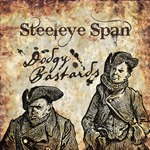
The theme of this ballad was common in many northern European languages. There are 125 different variants known in Swedish alone. Its general Scandinavian classification is TSB A 38; and it is (among others) known as Den talende strængelek or De to søstre (DgF 95) in Danish, Hørpu ríma (CCF 136) in Faroese, Hörpu kvæði (IFkv 13) in Icelandic, Dei tvo systar in Norwegian, and De två systrarna (SMB 13) in Swedish. It has also spread further south; for example, as Gosli iz človeškega telesa izdajo umor (A Fiddle Made from a Human Body Reveals a Murder) in Slovenian.
In the Norse variants, the older sister is depicted as dark and the younger as fair, often with great contrast, comparing the one to soot or the other to the sun or milk. This can inspire taunts from the younger about the older's looks.
In most of the Norwegian and some of the Swedish variants, the story ends by the instrument being broken and the younger sister coming alive again. In a few, she was not actually drowned, but saved and nursed back to health; she tells the story herself.
This tale is also found in prose form, in fairy tales such as The Singing Bone, where the siblings are brothers instead of sisters. This is widespread throughout Europe; often the motive is not jealousy because of a lover, but the younger child's success in winning the object that will cure the king, or that will win the father's inheritance.
In Polish literature from the romanticism period, a similar theme is found in Balladyna (1838) by Juliusz Słowacki. Two sisters engage in a raspberry-gathering contest to decide which of them gets to marry Prince Kirkor. When the younger Alina wins, the older Balladyna kills her. Finally, she is killed by a bolt of lightning in an act of divine retribution.
A Hungarian version exists, where a king has three daughters. The older two are bad and ugly and envy the younger child sister because of her beauty. One day, they murder her in the forest and place her corpse inside a fiddle. The fiddle plays music on its own and eventually is given to the royal family. The fiddle does not play for the evil sisters, but the princess is restored to life once her father tries to play it. The sisters are imprisoned, but the good princess pardons them once she becomes queen.
The ballad also appears in a number of guises in Scottish Gaelic, under the name 'A' Bhean Eudach' or 'The Jealous Woman'. In many of the Scottish Gaelic variants the cruel sister murders her sibling while she is sleeping by knotting her hair into the seaweed on a rock at low tide. When she wakes the tide is coming in fast and as she is drowning she sings the song 'A' Bhean Eudach' detailing her tragic end.
As is frequently found with traditional folksongs, versions of The Twa Sisters are associated with tunes that are used in common with several other ballads. For example, at least one variant of this ballad ("Cruel Sister") uses the tune and refrain from "Lay the bent to the bonny broom", a widely used song (whose original lyrics are lost) which is also used, for example, by some versions of "Riddles Wisely Expounded" (Child 1).
Canadian singer and harpist Loreena McKennitt's song "The Bonny Swans" is a pastiche of several traditional variants of the ballad. The first stanza mentions the third sister, but she subsequently disappears from the narrative. The song recounts a tale in which a young woman is drowned by her jealous older sister in an effort to gain the younger sister's beloved. The girl's body washes up near a mill, where the miller's daughter mistakes her corpse for that of a swan. Later, after she is pulled from the water, a passing harper fashions a harp from the bones and hair of the dead girl; the harp plays alone, powered by the girl's soul. The harp is brought to her father's hall and plays before the entire court, telling of her sister's crime. The song also mentions her brother named Hugh, and her beloved William, and gives a name to the older sister, Anne.
An early Alfred Lord Tennyson poem, "The Sisters", also bears a resemblance to the ballad: a sister scorned in love who murders the lover of her sister, and possibly the sister too, out of jealousy.
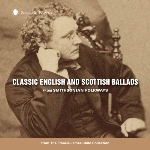

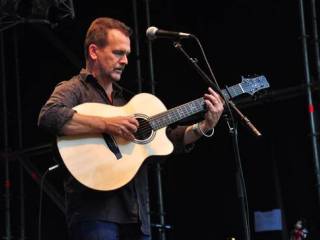  |
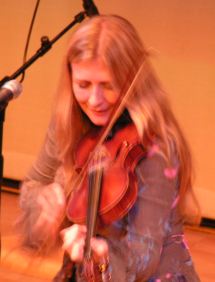
 »[Altan] have already recorded a Gaelic version of this, entitled A Bhean Udaí Thall on their second album, "Horse with a Heart". It is a murder ballad that tells a tale of jealousy and deceit between the older and the younger sister and how a travelling fiddler recreates an instrument from the bones and hair of the murdered sister's corpse. Gory stuff indeed!« (Mairéad Ní Mhaonaigh) »Versions of this song are to be found in Gaeltacht regions in both Ireland and Scotland, though this song appears to have a particular connection to Rann na Feirste, Co. Donegal.« (Gráinne Holland) |
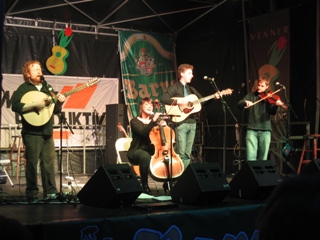  |
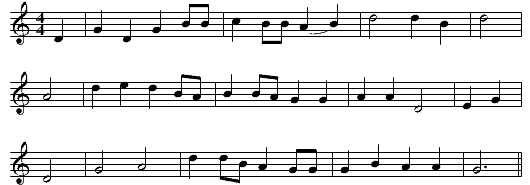

|
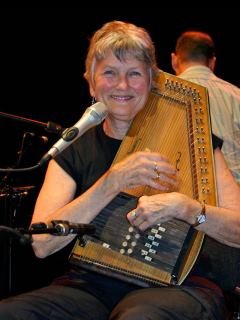 »Sister drowning sister, brother stabbing brother, fathers burning their daughters at the stake, mothers strangling their babies ... ah, family life! Blood runs thicker than water, they say, and in the old ballads it's a red tide of resentment, mayhem and murder.« |
"The Wife of Usher's Well" is a traditional ballad, catalogued as Child Ballad 79; it is originally from Britain but is also popular in North America. No complete original version has survived, but the song has been 'remade' in America in a cohesive form.


The ballad concerns a woman from Usher's Well, who sends her three sons away, to school in some versions, and a few weeks after learns that they had died. The woman grieves bitterly for the loss of her children, cursing the winds and sea.
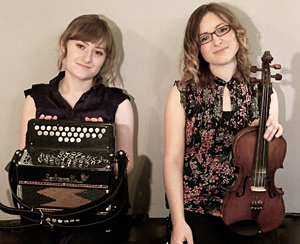

The song implicitly draws on an old belief that one should mourn a death for a year and a day, for any longer may cause the dead to return; it has this in common with the ballad "The Unquiet Grave". When, around Martinmas, the children return to their mother they do so as revenants, not, as she hoped, "in earthly flesh and blood", and it is a bleak affair. They wear hats made of birch, which is said to protect the dead from the influences of the living, from a tree that grows at the gates of Paradise. The mother expects a joyous reunion, in some versions preparing a celebratory feast for them, which, as subjects of Death, they are unable to eat. They consistently remind her that they are no longer living; they are unable to sleep as well and must depart at the break of day.
The most popular versions in America have a different tone and an overtly religious nature. They return at Christmas rather than Martinmas, and happily return to their Savior at the end. Indeed, Jesus may speak to the Wife at the end, telling her she had nine days to repent; she dies at that time and is taken to heaven.
The ballad has much in common with some variants of "The Clerk's Twa Sons O Owsenford". The Christmas appearance has been cited to explain why, in that ballad, the two sons are executed, but their father tells their mother they will return at Christmas; the father may mean they will return as ghosts.
A version of the ballad by folk-rock pioneers Steeleye Span can be heard on their 1975 album All Around My Hat. Andreas Scholl performs the song on the album Wayfaring Stranger: Folksongs (2001), and Karine Polwart on her album Fairest Floo'er (2007). Versions appear on the Bellowhead album Broadside and on the Runa album Current Affairs.
In autumn 2010, Quondam toured an Arts Council England-supported "new play with songs" called The Wife of Usher's Well to 27 venues. Inspired by the border ballad, this reprised the historic text in a new setting of a mother's losing her son in the war in Afghanistan. The writer was Jules Horne and the cast was Helen Longworth, Danny Kennedy, Ruth Tapp and Andrew Whitehead.
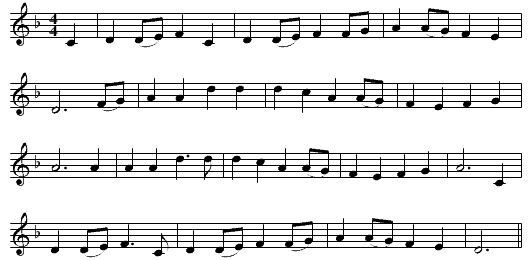

Listen to The Wife of Usher's Well from: The Askew Sisters, Bellowhead, Bellowhead (live), The Outside Track, Runa, Martin Simpson, Hedy West
Watch The Wife of Usher's Well from: Martin & Eliza Carthy, False Lights, Gillespie & Wolfe, Alistair Hulett, Georgia Lewis, Peggy Seeger
"Lady Isabel and the Elf Knight" (Child #4; Roud #21) is the English common name representative of a very large class of European ballads. The subject matter is frequently associated with the genre of the Halewyn legends circulating in Europe. There are a number of variants with different names (see Textual Variants, below).
The most frequently collected variant, The Outlandish Knight or May Colvin tells the tale of a young woman who elopes with a knight who has promised to marry her (and who in some instances uses magic to charm her) but who then tries to murder her to get money, cloths and horses. By a quick-witted ruse she manages to kill him instead, and in many versions she is helped to keep this experience from her parents by a resourceful parrot. The main variant has been collected frequently from traditional singers in England, Scotland, Ireland and North America.
Three main English language variants of this group of ballads, with rather different plots, have been published:
Lady Isabel hears the horn of an elf-knight and wishes she had the horn and the knight "to sleep in my bosom". He immediately appears and asks her to go to the greenwood. They ride there, and he tells her that he has killed seven kings daughters there and she is to be the eighth. She suggests that he put his head on her knee "that we may hae some rest before that I die". She puts him to sleep with a "small charm" and after tying him up with his own belt she kills him with his own dagger.
This version is written in couplets, with a refrain as second and fourth line:
Fair lady Isabel sits in her bower sewing,
Aye as the gowans grow gay
There she heard an elf-knight blawing his horn.
The first morning in May
"Gowan" is a name used for a number of plants with yellow flowers, but unless modified by another word, it usually means the Common Daisy, Bellis perennis, also called the "may gowan".
May Day, the morning of May 1, and May Eve, the evening of April 30, were important holidays with pagan connotations.
This variant is Child's A.

 Paul Clayton (1933-1967) was born in New Bedford, Massachusetts. Trained as a folklorist at the University of Virginia, he traveled extensively collecting songs. Clayton was also one of the major early figures in the 1950s Greenwich Village folk revival and an influence on Bob Dylan, who modified the tune to Clayton's "Who'll Buy Your Ribbons When I'm Gone" into his classic "Don't Think Twice, It's All Right." Although his career was short, Clayton left behind a strong recorded legacy of the songs he had collected all over North America.«
Paul Clayton (1933-1967) was born in New Bedford, Massachusetts. Trained as a folklorist at the University of Virginia, he traveled extensively collecting songs. Clayton was also one of the major early figures in the 1950s Greenwich Village folk revival and an influence on Bob Dylan, who modified the tune to Clayton's "Who'll Buy Your Ribbons When I'm Gone" into his classic "Don't Think Twice, It's All Right." Although his career was short, Clayton left behind a strong recorded legacy of the songs he had collected all over North America.«
A king's daughter is full of woe. A harpist plays and everyone else falls asleep. He takes her on the back of his horse to Wearie's Well. He tells her to wade in, and when she expresses her doubts - when she is up to her knee and then her waist - says that no harm will befall her and that he has often watered his horse there. When she is up to her chin he tells her:
Seven king's-daughters I've drownd there,
In the water o Wearie's Well,
And I'll make you the eight o them,
And ring the common bell
She asks him for a kiss to "comfort me" and when he leans down to kiss her she pulls him from the saddle and drowns him. She swims to the shore and thanks God that "The dangers she o'ercame".
This version was Child's B.
The Roud Folk Song Index lists about 60 names for this group of songs, most of which refer to this variant, including Fause (or False) Sir John, May Colvin (or variants), Go Bring Me Some of Your Mother's Gold, and Pretty Polly). This variant includes Child's C to F, and the vast majority of versions listed by Roud, including many named Lady Isabel and the Elf-knight or variants thereon.
A knight offers to take a young woman to his home in the north and marry her, and suggests she takes "some of your father's gold and some of your mother's fee"(Child F), as well as two horses (often white for her, dapple-grey for him) from her father's stables (where there are almost always "thirty and three"). They ride, sometimes to the side of a river, or more often to the banks of the sea, where he tells her to dismount:
'Mount off, mount off, thy lily-white steed,
And deliver it unto me
For six pretty maidens I have drowned here
And the seventh thou shalt be.'
He tells her to take off her clothing, sometimes item by item (Child E), as it is too costly to be allowed to rot in the sea. She asks him either to turn his back:
For it is not fitting that such a ruffian
A naked woman should see. (Child E)
or to cut down the local vegetation:
'Go fetch the sickle to cut the nettle
That grows so near the brim,
For fear it should tangle my golden locks
Or freckle my lily white skin' (Child F)
and then either she pushes him into the sea or "seizes him by the middle so sma" and throws him in.
He asks her to help him out, but she refuses:
'Lie there, lie there, you false-hearted man,
Lie there instead of me,
For if six pretty maidens thou hast drowned here,
The seventh has drowned thee.'
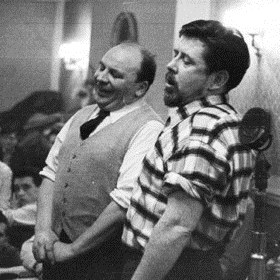
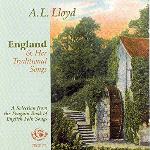
She rides home, leading the spare horse. Sometimes the story ends here, but often when she arrives home a parrot comments on how late she has returned, saying he is afraid "Some ruffian hath led you astray". She promises him a luxurious cage if he keeps her secret, and when her father asks the parrot what makes him "speak before it is day" he replies that a cat was going to eat him. His mistress promises him that:
"Thy cage shall be made of the glittering gold,
And the door of the best ivory"
In performance the last syllable of the fourth line is sometimes repeated twice, and then the line is repeated:
The seventh has drowned thee. thee, thee, The seventh has drowned thee.
In Scotland this variant is sometimes called May Colvin (various alternative spellings occur). Child gives two versions of this. Child's D version is very similar to other texts except that the young woman is named as May Colven and the knight as False Sir John. In the second the knight uses a charm to make an initially reluctant May Collin go with him, and the story ends when, after the parrot episode, she goes to her parents, tells them what has happened, and they go to the scene of the crime to find and bury the body "for fear it should be seen".
The earliest known version of any of these variants is either a broadside entitled The False Knight Outwitted sometime in the second half of the eighteenth century (also the earliest "Outlandish Knight" text and Child's version F), or May Colvin, published in Herd's "Ancient and Modern Scottish Songs" in 1776 (Child's version C). The earliest printed version of "The Gowans sae Gae" was in "Ancient Ballads and Songs Volume 1" by Peter Buchan while "The Water o Wearie's Well" was first published in Volume 2 of the same book. Both volumes were published in 1828.
The Outlandish Knight variant was repeatedly printed by broadside publishers both in London and the provinces. Most broadside texts are fairly similar to one another, and often start:
An outlandish knight came from the north lands
And He came a'wooing of me
He told me he'd take me to the north lands
And there he would marry me.
The Roud Folk Song Index lists about 367 instances of this group of ballads collected from traditional singers, with the great majority being of the Outlandish Knight story. 198 were collected in the USA, 120 in England, 31 in Canada, 9 in Ireland, 8 in Scotland, and 1 in Australia. This is probably an underestimate as it is based on named performers, and collectors haven't always named the sources of the songs they publish.
Steve Roud and Julia Bishop point out that this is one of about half a dozen Child ballads that have been most consistently popular, having been collected "time and again all over the English-speaking world"
Many of these are available to listen online.
| Informant | Location | Collector | Year | Title | Recording held by: |
|---|---|---|---|---|---|
| Jumbo Brightwell | Suffolk | E. J. Moeran | 1951 | The False-Hearted Knight | Association for Cultural Equity |
| Luke Stanley | Lincolnshire | Alan Lomax | 1954 | The Outlandish Knight | Association for Cultural Equity |
| William "Bill" Williams | Gloucestershire | Peter Kennedy | 1957 | The False Hearted Knight | British Library Sound Archive. |
| Otis Bird | Arkansas | Max Hunter | 1958 | Little Billy | Max Hunter Collection, Missouri State University. |
| Mrs. Allie Long Parker | Arkansas | Max Hunter | 1958 | Loving Polly | Max Hunter Collection, Missouri State University. |
| Mr. Fred High | Arkansas | Max Hunter | 1959 | Willie Came Over the Main Wide Ocean | Max Hunter Collection, Missouri State University. |
| Donia Cooper | Arkansas | Max Hunter | 1959 | Pretty Polly' | Max Hunter Collection, Missouri State University. |
| Ollie Gilbert | Arkansas | Max Hunter | 1959 | Pretty Polly' | Max Hunter Collection, Missouri State University. |
| Fred Jordan | Shropshire | Steve Gardham | 1971 | The Outlandish Knight | Steve Gardham Collection, British Library Sound Archive. |
| Willie Mathieson | Kinross, Scotland | Ailie Edmunds Munro | 1973 | May Colvin | Tobar an Dualchais/Kist o'Riches website. |
| Fred Jordan | Shropshire | Bob Patten | 1992 | The Outlandish Knight | Bob and Jacqueline Patten Collection, British Library Sound Archive |

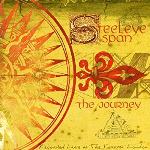
These ballads have received a lot of attention from folklorists and other scholars. There is some consensus that they derive from a family of ballads related to the Dutch ballads about Heer Halewijn. Discussion is sometimes confusing as both an individual variant and the group as a whole can be referred to as a ballad by scholars.
The ballad family is known throughout Europe and is described by Child as the ballad which "has perhaps obtained the widest circulation". He notes that the Scandavian and German versions (both Low and High German) are the fullest versions, while the southern European ones are rather shorter, and the English versions somewhat brief.
The Dutch song Heer Halewijn is one of the earlier (13th century) versions of this tale, fuller and preserving older elements, including such things as the murderer's head speaking after the heroine has beheaded him, attempting to get her to do tasks for him.
At least 60 French, or French-Canadian versions have been collected and these almost all end in the same location as the English version, on a riverbank or by the sea, a motif only found elsewhere in the extensive and widespread Polish variants.
Numerous German variants are known. Child says 26 German variants but Lloyd, writing more than a century later, claims over 250. In some, the heroine rescues herself; in others her brother rescues her; and in still others, the murderer succeeds but her brother kills him after the fact. In some of them, the dead women reappear as doves and attempt to warn the latest victim.
Eleven Danish variants are known, often including the heroine's meeting with the sister or the men of the murderer and dealing with them as well. An Icelandic version has a very short account of the tale. Other variants are northern Italian, Spanish, Portuguese, and Magyar.
In his introduction to this group of ballads Child discusses their place in European culture. He places them in the group of ballads and stories often named after what is considered to be the most complete example, the Dutch ballad Heer Halewijn, he describes ballads from Denmark, Norway, Sweden, Germany, Transylvania, Italy, Spain, Portugal and France and he reviews theories put forward to explain the origin of this ballad family and the nature of the "Outlandish Knight". He mentions theories that the ballad draws on stories about elves, or about the nix or neck, malevolent water spirits in German folklore, and that it is derived from the Judith and Holofernes story in the Old Testament.
Holger Olof Nygard, in an article in "The Journal of American Folklore" discusses the various theories put forward about the origin of the ballads in this group and what he calls its "continental analogues. These include:

Two sentences in Nygard's conclusion are worth quoting:
"We are left with a handful of improbable impossibilities as to the source of the ballad. And for these we may well be thankful, for their authors have trod the sands of surmise and have taught us how to avoid them, if we will but learn by example.
Child takes it for granted that the Scottish and English ballads he publishes are old, and that they are the remnants of more elaborate originals:
"although the best English forms are not without ancient and distinctive marks, most of these have been eliminated, and the better ballads are very brief"
In this he follows Charles Kirkpatrick Sharpe who writes of the version of May Collin in his "Ballad Book" (Child's version D):
"This ballad appears modern from a great many expressions, yet I am certain that it is old".
But Steve Roud points out that as the two earliest British versions are late 18th century and
"Despite its archaic feel and close foreign relatives, the ballad does not seem to be very old, at least in Britain"
There have been various other rationalisations, attaching the story to specific locations and historical events: for example to Gilles de Laval in the early fifteenth century. The variant May Collean has been attached, as a legend, to the coast of Ayrshire, where the heroine was said to come from the family Kennedy of Colzean. A rocky promontory called Gamesloup, on the Ayrshire coast, is pointed to by local people as the spot where the knight drowned his victims. This local association is noted by A. L. Lloyd who quotes it as an example of a ballad which "so strikes the common imagination that people want to make the piece their own by giving it a local setting".


There have been doubts raised about the authenticity of Child's A version, The Gowans sae Gae, the suggestion being that it was composed by Peter Buchan (editor of "Ancient Ballads and Songs of the North of Scotland" (1828), the source of Child's A and B versions) or one of his informants,. This is referred to by D K Wilgus:
In addition to the now-discredited notion that the "Lady Isabel" form is the Scottish original of the non-supernatural English texts, two explanations of the "Elf-Knight" text are possible. One, based on the comparative evidence, is that the "Lady Isabel" text is a palpable fraud perpetuated by Peter Buchan with the probable help of a "supplier". This is the option chosen by Nygard. The other possibility, argued by David Buchan, is that "Lady Isabel" is a "stray" from Scandinavia which turned up in Aberdeenshire. In terms of the Anglo-American tradition of the "Outlandish Knight" the "Lady Isabel" text is of little importance, seems it seems to have had no influence except in the scholarly titling of variants.
Wilgus goes on to say:
Nygard depended to some extent on extratextual information in being influenced by the suspicion of texts from Peter Buchan's collection, voiced by Child and other scholars. Ironically, Child's suspicions were largely based on the subliterary character of other texts, while "Lady Isabel" is literarily superior.
Neither of Buchan's variants is found at all widely in the tradition, if they are found at all. Versions titled Isabelle and the Elf-Knight are mainly versions of the "Outlandish Knight variant.
Several variations of the ballad were classified by Francis James Child that feature a "Lord" instead of an elf knight.
Some variations have a parrot at the end, who promises not to tell what happened. In some of these, the parrot is eaten by the cat.
The variations of the ballad vary on some of the key characters and details:
| Lady Isabel variants per Child | Heroine | Villain | # Dead Women | Setting | Parrot | Notes & Source(s) |
|---|---|---|---|---|---|---|
| The Gowans sae gay or Aye as the Gowans grow gay | Lady Isabel | Elf-Knight | 7 | Greenwood | Buchan's Ballads I:22 of N. Scotland; Motherwell's MS p. 563 | |
| The Water o Wearie's Well | King's daughter | Luppen | 7 | Wearie's Well | Buchan's Ballads of the N. of Scotland II:80; Motherwell's MS, Harris MS 19 | |
| May Colvin or May Colvin, or False Sir John | May Colvin | False Sir John | 7 | Sea-side | Yes | year 1776. Herd's MSS I:166; Herd's Ancient & Modern Scottish Songs 1776:193, Motherwell's Minstrelsy p67 |
| May Collin , May Collean or Fause Sir John and May Colvin | May Collin | Sir John, bloody knight | 8 | Bunion Bay | Yes | year 1823. Sharpe's Ballad Book 1823, 17:45; Buchan's Ballads of N. Scotland II:45 |
| The Outlandish Knight | Lady | Outlandish knight | 6 | Sea-side | Yes | Note: This version is "a modernized version" - from "Ancient Poems, Ballads and Songs of the Peasantry of England" by Dixon:74. The story is performed by UK folk group Bellowhead on their album Burlesque. |
| The False Knight Outwitted | Lady | Knight | 6 | River-side | Yes | Roxburghe Ballads, III:449 |
| Comparable song | ||||||
| "Heer Halewijn" (Dutch) | Princess | Halewijn | many | Forest & gallowfield | 13th century. (compared to Outlandish Knight and May Colvin or False Sir John) | |
Other titles:
The Roud Folk Song Index lists 68 different titles. "The Outlandish Knight" is the most frequent.
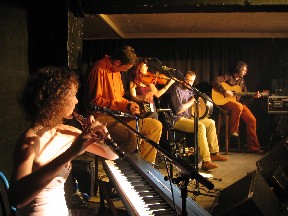
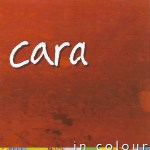
The dialogue between the Lady and the parrot, which appears in some versions, was made into a comic song: "Tell Tale Polly", published in Charley Fox's Minstrel Companion (ca. 1860).
Another related ballad, "Hind Etin" (Child Ballad #41), also begins with abduction and rape by an elf, but ends with the pair falling in love and living happily together.
Many of the same motifs are found in Child Ballad 48, "Young Andrew".
Various forms of these ballads show great similarity to the fairy tales Fitcher's Bird and Bluebeard.
Arthur Rackham's "May Colvin and the Parrot" illustrates this ballad.
Kentucky artist and ballad singer Daniel Dutton has a painting of this ballad, titled "False Sir John", on his Ballads of the Barefoot Mind website.
Variants of the song are commonly sung to several different tunes. The following tune was collected by Ralph Vaughan Williams in 1908 from Mr Hilton in South Walsham, Norfolk. It was published in the Folk Song Journal of English Folk Dance and Song Society (IV 123), and included in The Penguin Book of English Folk Songs.
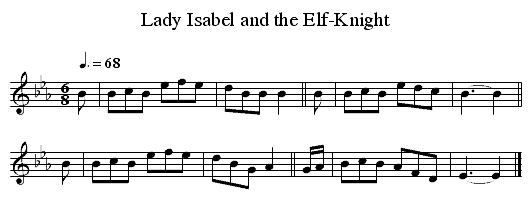
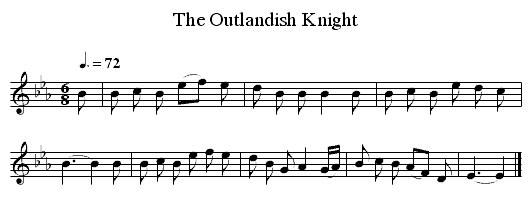
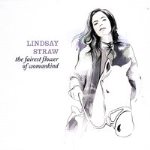
Listen to Outlandish Knight from: Annalivia, Bellowhead, Cara, Pete Coe, Danú, Helen Flaherty, Pressgang, James Raynard, Runa, Runa (live), Pete Seeger (live), Martin Simpson, Emily Smith, Spinning Wheel, Lindsay Straw
Watch Outlandish Knight from: Annalivia, Jesse Ferguson, Helen Flaherty, Kadia, Low Lily, Kate Rusby, Emily Smith, Emily Smith (live), Steeleye Span (1), Steeleye Span (2)

Text is available under the Creative Commons Attribution-ShareAlike License.
Date: February 2019.
Photo Credits:
(1) John D. Batten: Binnoire (English Fairy Tales, 1898),
(2) Iona Fyfe,
(3),(17) Maddy Prior/Steeleye Span,
(4) Ellen Stekert,
(7) Gráinne Holland,
(10) Peggy Seeger,
(11) The Outside Track,
(12) The Askew Sisters,
(14) Helen Flaherty,
(15) Paul Clayton,
(16) A.L. Lloyd & Ewan McColl,
(18) Jon Boden,
(19) Rachael McShane
(unknown/website);
(5) Martin Simpson,
(8) Malinky,
(19) Cara
(by Walkin' Tom);
(6) Mairéad Ní Mhaonaigh (Altan)
(by The Mollis);
(9) 'The Twa Sisters',
(13) 'The Wife of Usher's Well',
(20) 'Lady Isabel and the Elf Knight',
(21) 'The Outlandish Knight'
(by ABC Notations).